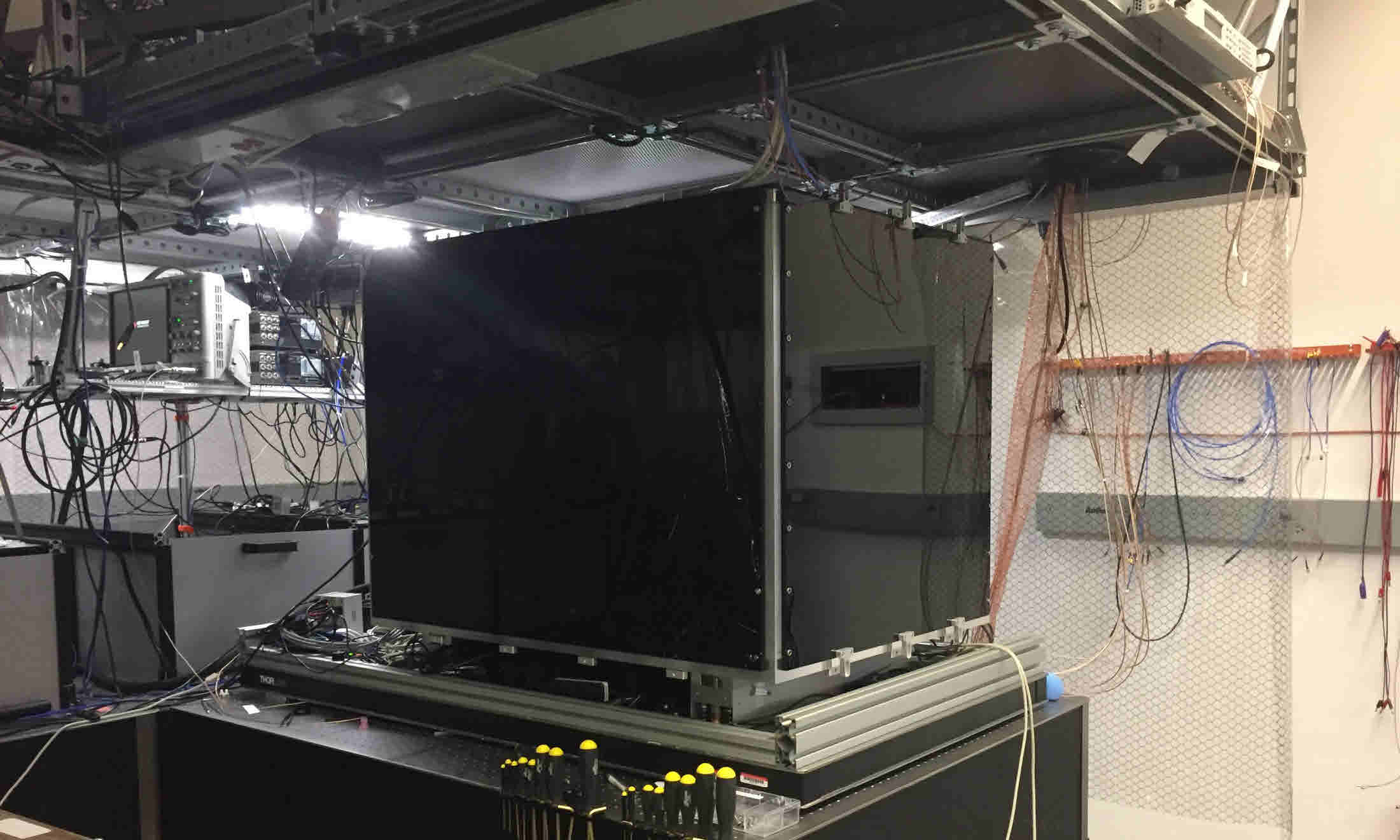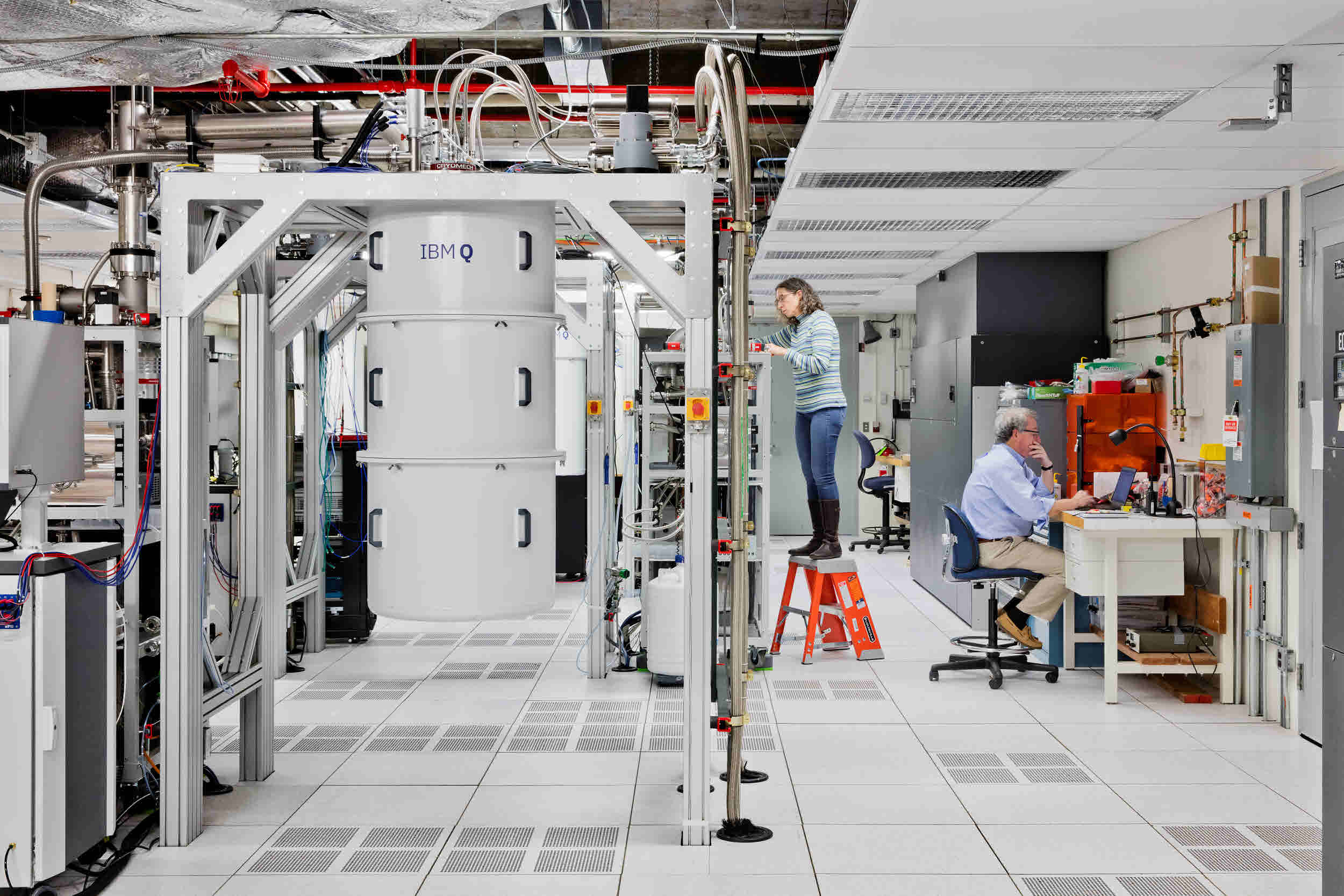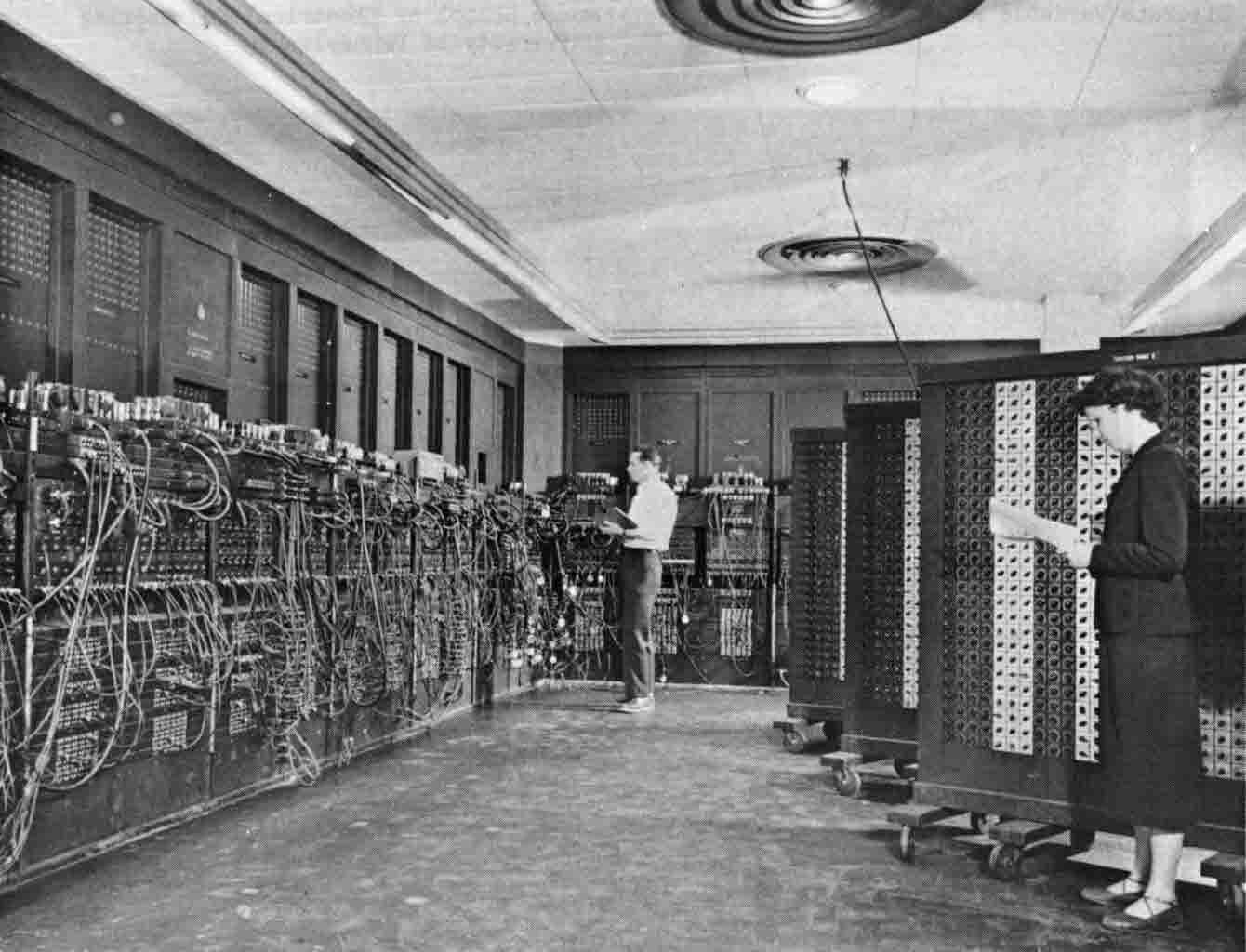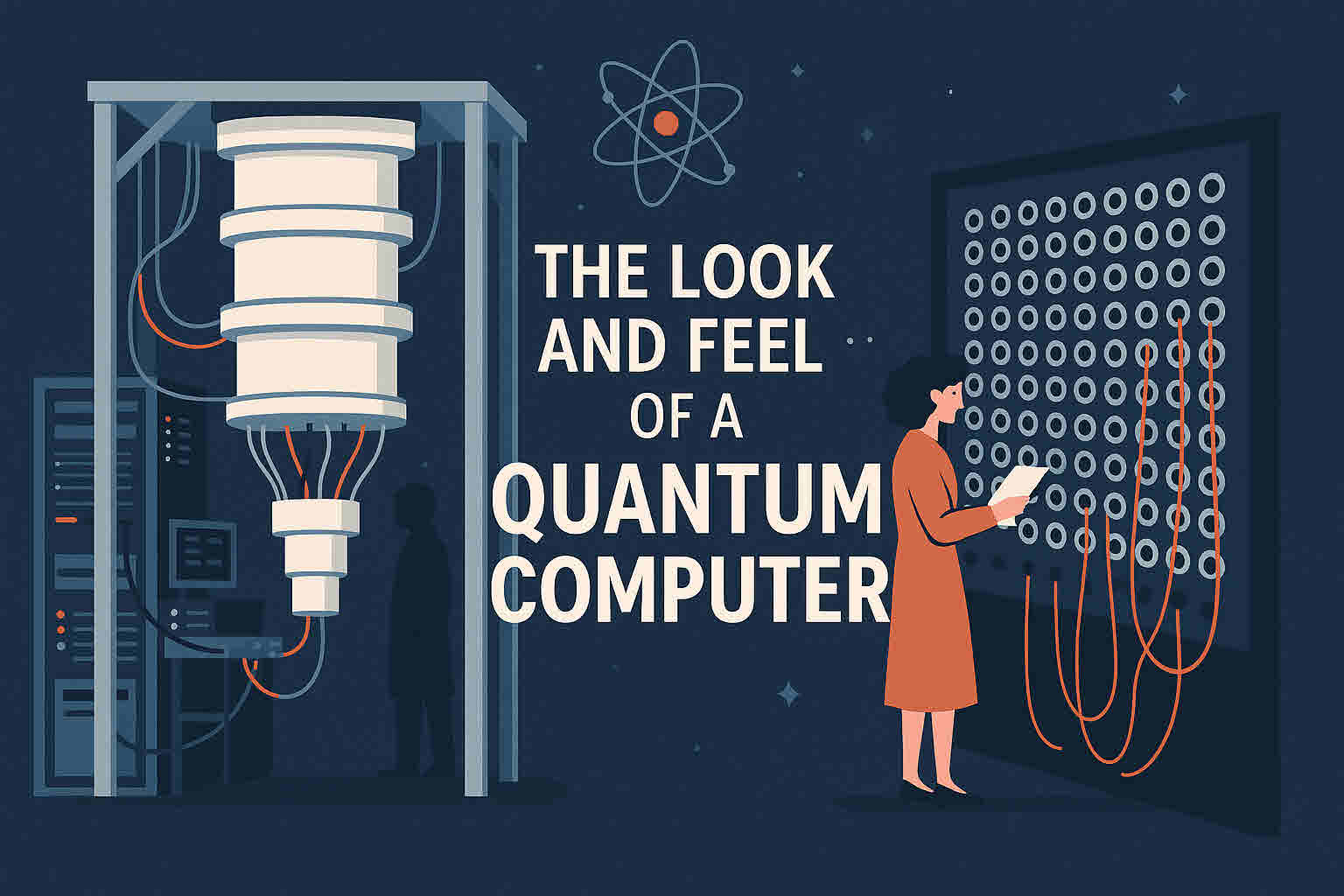When you think of a computer, chances are you imagine laptops, servers, or maybe even smartphones. But a quantum computer looks nothing like these familiar devices. Instead, it has more in common with the room-filling vacuum-tube systems of the past, like ENIAC, than with today's tablets and phones.
A Different Kind of Machine
Quantum computers are still in the research and prototyping stage. They typically take up an entire laboratory space, packed with complex infrastructure. Surrounding the quantum "core" are systems designed to shield it from electromagnetic interference, heat, vibrations, and other environmental noise that would otherwise disrupt performance.
Alongside this shielding, you'll also find conventional classical computers, electronics, and optical systems that run algorithms, control qubits, and read out results.

Modern ion-trap quantum computer setup with black shielding box on an optical table, surrounded by cables and electronics for laser control.
This picture shows a modern ion-trap quantum computer setup. The large black shielding box sits on a vibration-isolated optical table, with cables and control systems surrounding it. Inside, ions are trapped and manipulated while lasers and detectors outside the shield measure their fragile states.
Superconducting Quantum Computers
One of the most promising technologies today is the superconducting quantum computer. The core processor is housed in a dilution refrigerator, which cools it down to less than 20 milliKelvin—a temperature more than 100 times colder than outer space (orders of magnitude (temperature)).
This extreme cooling is necessary to suppress Johnson–Nyquist noise from connected electronics like arbitrary waveform generators, microwave signal sources, and precision current controllers. Without it, superconducting qubits wouldn't remain stable.

IBM superconducting quantum computer lab showing a large white dilution refrigerator with researchers working on control electronics.
This is IBM's superconducting quantum computing lab. The tall white cylinder is the dilution refrigerator keeping qubits colder than outer space. Researchers manage racks of precision control hardware around it, tuning signals and calibrating the system to run quantum algorithms.
Trapped-Ion Quantum Computers
Another cutting-edge approach is the trapped-ion quantum computer. Here, ions are confined in an ultra-high vacuum chamber, isolated from outside disturbances. These ions are cooled using laser cooling down to ~0.5 milliKelvin.
For larger systems, cryogenic technologies like pulse tube refrigerators are added, reaching 3–4 Kelvin, to further reduce noise and stabilize the environment. The qubits themselves are manipulated with finely tuned laser beams directed by mirrors, beam splitters, optical modulators, and fiber optics. Their states are read out via laser-induced fluorescence detected by sensitive photon counters.
Echoes of the Past
It's fascinating that quantum computers, despite being futuristic, resemble the earliest classical computers in scale and complexity. Compare a modern quantum lab with ENIAC: both sprawl across rooms, feature intricate wiring, and need teams of experts to operate them.

Historical ENIAC computer from the 1940s with extensive wiring, large panels, and people operating the machine in a full-sized room.
This historical photo of ENIAC in the 1940s shows just how massive and cable-heavy computing once was. Quantum systems today echo this room-sized complexity as they push toward fault-tolerant, scalable machines.
Why They Look the Way They Do
Both superconducting and trapped-ion machines require complex shielding, cryogenic cooling, and precision electronics. This explains why quantum computers look like chandeliers of wiring or large black boxes on optical tables rather than sleek laptops. Their appearance is driven entirely by the delicate conditions required to keep qubits coherent.
Final Thoughts
Standing next to a quantum computer, you don't just see advanced engineering—you *feel* the frontier of science. The humming refrigerators, intricate wiring, and gleaming optical setups remind us that the look and feel of quantum computers are as extraordinary as the problems they are built to solve.
From superconducting processors cooled near absolute zero to trapped-ion systems held in ultra-high vacuum, these machines show us a glimpse into the future—where computation leaps beyond classical limits.
References
Vacuum tube - Understanding the historical context of room-sized computing systems that quantum computers resemble.
ENIAC - The first general-purpose electronic digital computer, demonstrating the evolution of computational infrastructure.
Electromagnetic interference - Learn about the environmental challenges quantum computers must overcome to maintain coherence.
Superconducting quantum computing - Comprehensive overview of superconducting qubit technology and dilution refrigeration requirements.
Trapped ion quantum computer - Detailed explanation of ion trap technology and laser cooling techniques used in quantum computing.
Connect with Us
See this post on our LinkedIn - Check out our latest insights on quantum computing technology and its revolutionary potential.
Follow us for more insights on quantum computing, emerging technologies, and future computational paradigms!
